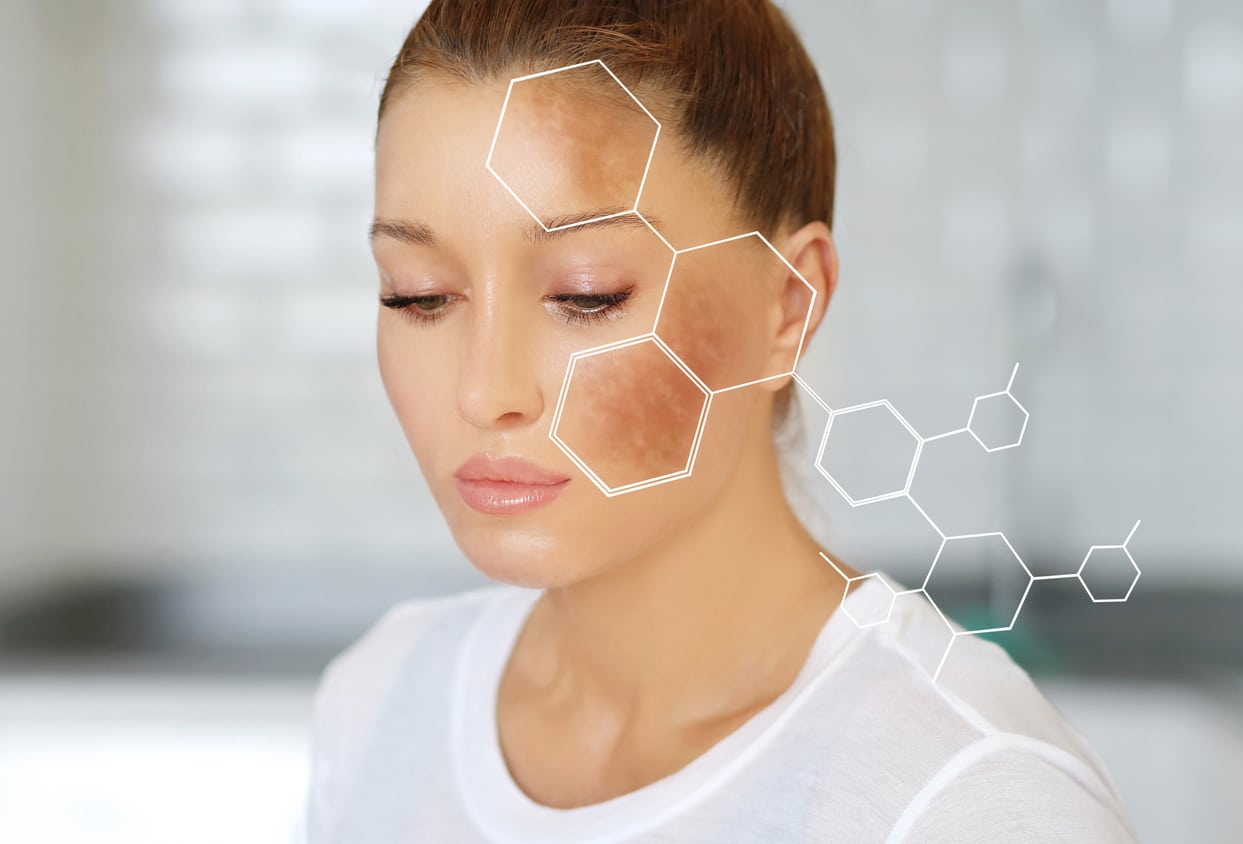Looking in the mirror after a fun in the sun summer can be a daunting experience. Once again, the dark brown and possibly grey patches have come back again and do not represent how we want to see ourselves. Fighting hyperpigmentation takes patience, perseverance, and an understanding of what we are dealing with. Determining what type of hyperpigmentation is present will greatly impact the types of treatments pursued, both at home and in office, and the results that are realized. This stubborn condition can be born from a few different scenarios: pregnancy or birth control use, post trauma inflammation, and simple sun exposure.
Hyperpigmentation caused by pregnancy, or birth control, is also known as Melasma or “pregnancy mask” and presents in solid, dark form usually on the cheeks, chin, upper lip and forehead. This condition is the most difficult to treat and is best tackled with a combination of in home and at office treatments. Because it is more prevalent in darker skin tones (Fitzpatrick 4 or higher), IPL Light Therapy is not a good option because the skin can hold on to the heat from this polychromatic light and cause the condition to worsen. Resurfacing lasers are a better option because they have longer wavelengths and are attracted to water rather than pigment, allowing the skin not to retain heat. One promising option is Pico Lasers. The energy is delivered in a trillionth of a second and converts into pressure rather than heat, leaving much less opportunity for darkening an already challenging situation. Successful at home treatment for melasma will always include vitamin-c, retinol (vitamin a), hydroquinone, and sunscreen. It is important to understand that what you see present on your face is just the tip of an iceberg and consistent, continuous treatment will be necessary with at home products. This is a war, not a battle, I am afraid, but with commitment, it can be significantly improved!
PIH or Post Inflammatory Pigmentation is a result of trauma to the skin such as acne, picking, rubbing or burns. Although, like melasma, it is typically seen in darker skin types, it can be present in fairer skins as a result of skin conditions such as Acne, Eczema and Rosacea. It can range in color from pink to dark brown and will typically fade over time and with good at home and in office treatment. Superficial peels that do not go deep into the skin tend to be the best course of action, with 6-12 treatments being the general rule of thumb. Usually, you need to take great care with peeling darker skin types, as it can also worsen the condition, but now companies like Face Reality have developed peels that are safe for all skin types and helpful for addressing this condition. At home treatments would include a vitamin-c, mandelic acid or retinol, and sunscreen.
Hyperpigmentation that is cause by sun exposure presents in a more freckling, patchy or lace-like pattern. This condition responds well to IPL Light Therapy which uses polychromatic light attracted to pigment. The pigment absorbs the light, is destroyed and removed naturally by the body through cellular turnover. Because the method relies on finding color, a lighter skinned patient with darker spots will be more successful than a darker, more olivine skin that has dark spots. One should expect to do 3-6 treatments, one month apart, and then always do a clean up session after summer fun. Likewise, at home care will include a vitamin-c, alpha hydroxy acid or retinol, and sunscreen.
You may have noticed that there is a common thread among the at home care….vitamin-c, retinol and sunscreen daily! When I work with skin clients, I make it very clear that these items are not negotiable in their skin care routine. Simply put, these three super heroes will make all the difference down the road!

